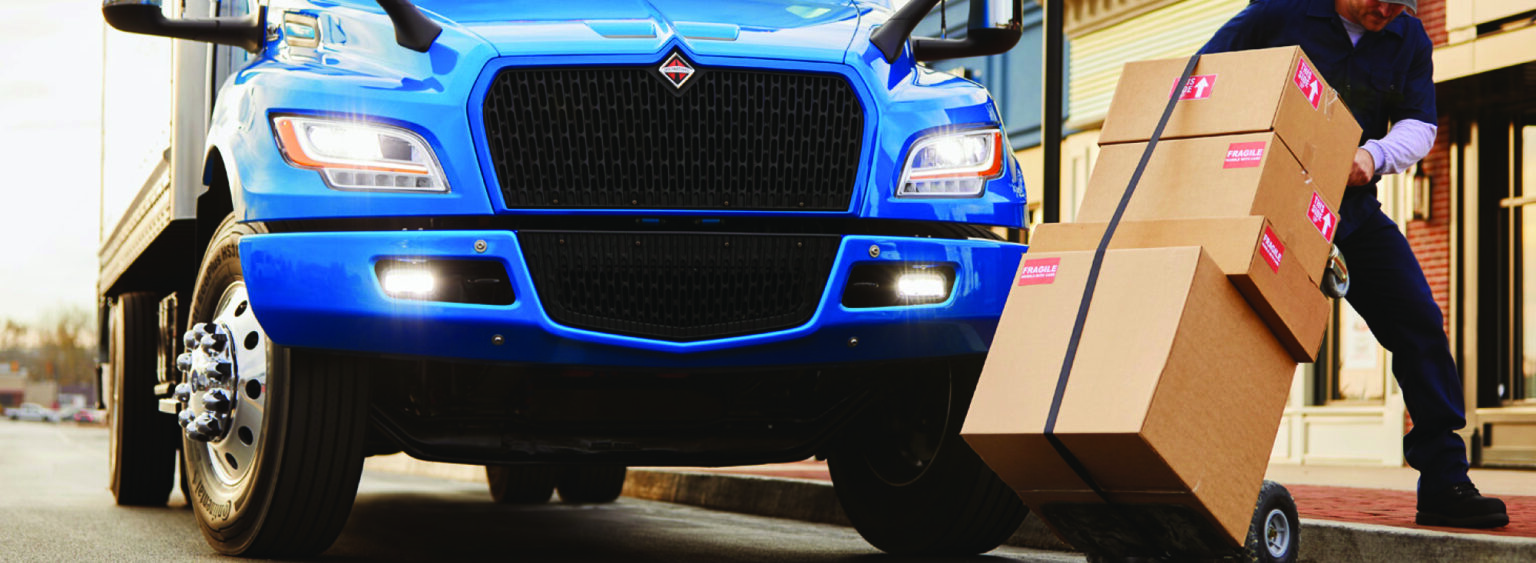
It’s a common sight in most cities. Drivers unload packages at their destinations, large trucks block pedestrian and vehicle lanes. It’s a major inconvenience, not to mention the effects these trucks have on the environment. According to government Canada’s statistics, trucks are among the significant contributors to air pollution, particularly in urban centers. They are a crucial concern with the increasing push to realize environmental sustainability goals.
Notably, ecommerce sales and their supply chain networks play a crucial role in determining the efficiency of urban life. Without innovative solutions, the problem is bound to get worse, and that’s why adopting electric vehicles (EVs) is inevitable. Amazon acknowledges this need and even ordered 100,000 electric delivery vans expected for deployment between 2021 and 2024. UPS will also add 2,000 EVs to their fleet starting in 2022, and many more companies are moving to EVs.
EVs now seem a natural and cost-effective solution even in last-mile delivery. Fleet electrification in last-mile delivery eliminates the problem in our cities, the environment, and the supply chain companies’ bottom line. Its cost benefit has inspired numerous companies to make significant investments in electrifying their last-mile delivery fleets and telematics.
Last-mile delivery refers to the movement of goods from the transportation hub to their final destination. Typically, it’s the delivery of the merchandise to a personal residence or the final consumer. Usually, the aim is to get the items to the end user as fast as possible and most efficiently. As a result, last mile logistics has grown to become a key area of interest for supply chain companies as the need for fully integrated channels arises. Companies have been forced to re-evaluate their current transportation networks and adjust them accordingly.
In 2020, the pandemic struck, and the ever-complicated last-mile delivery sector became even more chaotic. Businesses struggled to keep pace with the changing consumer needs like faster delivery, contactless delivery, and zero cash payments, among other aspects. Savvy companies began to acknowledge the need for telematics to ensure transparency in their supply chains. They could track their shipments to know where goods are, whether they are delivered on time, and ensure all aspects of the order are fulfilled.
These aspects relate to telematics and are essential for businesses and supply chain companies in last-mile delivery. By definition, telematics refers to the branch of information technology that deals with the long-distance transmission of computerized information. In last-mile delivery, vehicle telematics combines aspects such as GPS systems, wireless devices, black box, AI technologies, and onboard vehicle diagnostics to help record and transmit vehicle data. It can be location, speed, or monitoring vehicle requirements such as maintenance and servicing.
Natural Resources Canada committed to investigating its electric vehicle fleets to determine the cost and savings associated with electrifying fleets. They employed telematics to help them conduct an in-depth analysis, although it was also part of Canada’s Greening Government Strategy. They used an Electric Vehicle Suitability Assessment tool that proved instrumental in their research by:
The analysis involved 270 light-duty vehicles but many trucks and SUVs. The results revealed a potential 30% reduction in greenhouse gas emissions and cost savings of up to $1.3 million across the lifetime of the electric vehicle fleet.
Further analysis of different agency vehicles also illustrated the potential for cost savings and carbon dioxide emissions. A 13.7% savings per fleet, $ 4.85 million in the total cost of ownership, and 1,200 metric tons of carbon dioxide were realized. Fuel consumption reduction was 536,000 liters from a fleet of 1,237 vehicles.
The growth of the online shopping and delivery industry shows no signs of waning in the post-Covid-19 era. Delivery vehicles still make one of the most prominent heavy-duty vehicle classes in Canada, and based on investigations, and electrifying last-mile delivery vehicles seems more economically viable. The last-mile delivery industry may be one of the first to adopt EVs, but the time is due for other segments to consider EVs and telematics for better fleet operation efficiency. Furthermore, the global regulations and sustainability goals timelines to reduce emissions are fast approaching, and EVs are among the worthwhile strategies for achieving them.
The supply chain sector is dynamic, and businesses must keep up with the space to remain competitive. Additionally, supply chain processes must meet new requirements, such as the environmental sustainability goals with rules and responsibilities. For businesses to deliver these expectations, leaders need to revisit strategies such as last-mile delivery, and adopting EV and telematics will be indispensable. EV fleets are the future.
To learn how and when to electrify your fleet, there is an EV assessment that you can complete.


